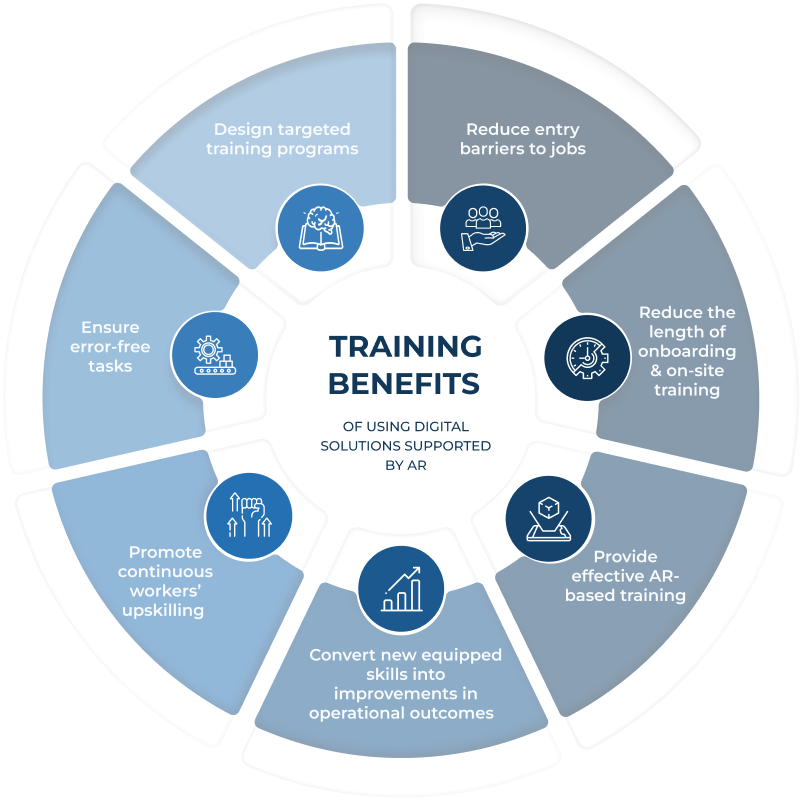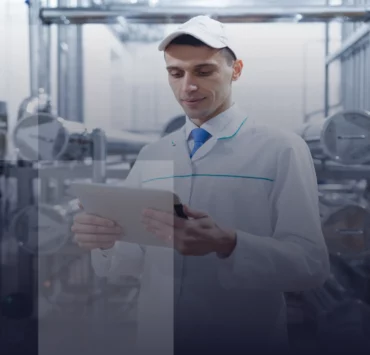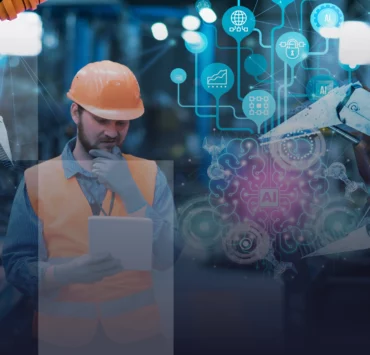Sharing knowledge dates back to the early days of humanity. However, over the ages, studying, learning, and teaching have become structural conventions that enable progress and innovation. Only by acquiring knowledge can individuals understand and overcome issues or achieve improvements. As societies progressed, training became more complex and detailed, adapting to the content it seeks to convey.
How does training work in the industry?
In today’s job market, training is crucial to teach new workers to perform tasks. In fact, when it comes to roles in the industry, workers are required to go through rigorous training processes. Most industrial positions involve complying with pre-established work patterns and performing potentially hazardous tasks. As a result, companies must teach operators how to follow safety protocols to protect themselves and others.
Only by acquiring knowledge can individuals understand and overcome issues or achieve improvements.
Simultaneously, training is an essential process to expand the skill set of already existing workers. This practice promotes continuous improvement, allows workers to perform more tasks, and reinforces their autonomy.
What’s holding back training in the industry?
In recent years, with growing competition from overseas producers, an increasingly aging workforce, and renewed struggles to attract skilled workforces to fill up roles (as discussed in a previous article), training has become particularly relevant in the industry.
Long and inefficient training
In the past, workers attempting to fill high-level manufacturing roles have taken up to 30 years to be fully trained. This underlines just how demanding such positions can be. However, businesses are in dire need of solutions that can help them efficiently train new workers while reducing costs and training times. Combine this with the growing need for upskilling and companies are left with a time-consuming, expensive, and draining task.
Ultimately, to answer the challenges mentioned above, businesses must tackle their main setback when it comes to training: legacy training methods that are technically outdated, no longer efficient, drain resources, and have limited scope. In fact, inefficient training methods can lead to safety issues, extra costs, and increased difficulty in attracting new workers.
Augmented & Connected worker solutions: how can they help?
New automation systems have been crucial in accelerating digitalized training. By combining Augmented reality with cloud-based automation platforms that digitize industrial processes, training in the industry can be reinvented.
In essence, by leveraging Augmented & Connected Worker solutions, managers can access automated reports and track the company’s progress using key performance indicators (KPIs). This allows for an understanding of training needs and how to deliver continuous improvement.
In addition, the digitization of manuals, checklists, work instructions, and other relevant documents allows trainees to access all the information they need using mobile devices or wearables. This reinforces workers’ problem-solving skills when dealing with unexpected issues.
Furthermore, AR-based training offers workers hands-on experiences and allows them to clearly visualize how operations are conducted. AR markers locate relevant sites within shop floors and assist new workers when conducting tasks they’re unfamiliar with.

Effective training is a crucial step to ensure that workers succeed and that businesses operate at their full potential. Companies will greatly benefit by valuing workers, ensuring they can perform autonomously and are continuously improving their skills. As a result, this will enable workforces to become more resilient and flexible.
Learn More
Interested in learning more about digital solutions and how they are changing shop floors? Explore our use cases or reach out to our team to schedule a free demonstration to understand the full potential of Glartek’s Augmented & Connected Platform.



